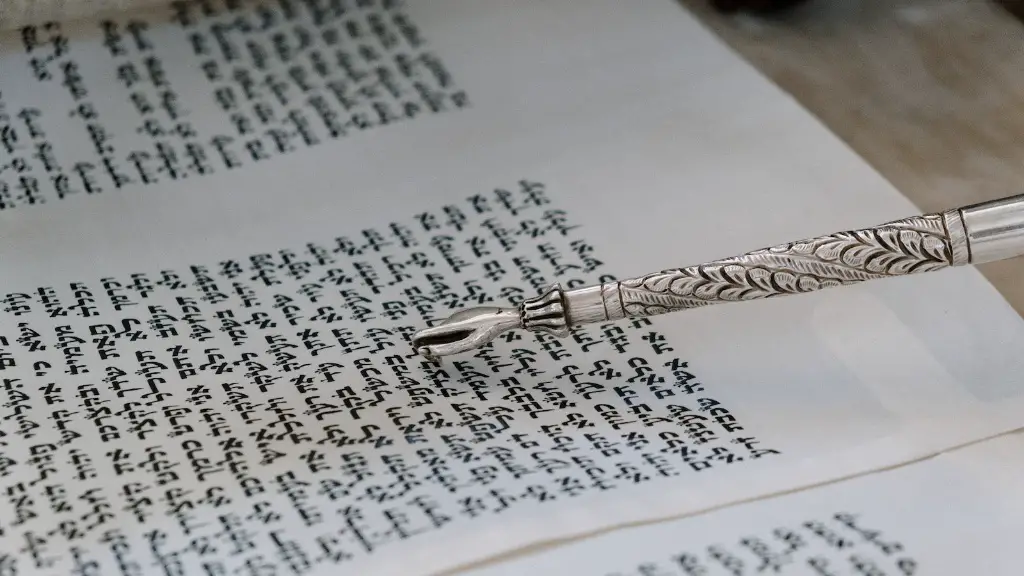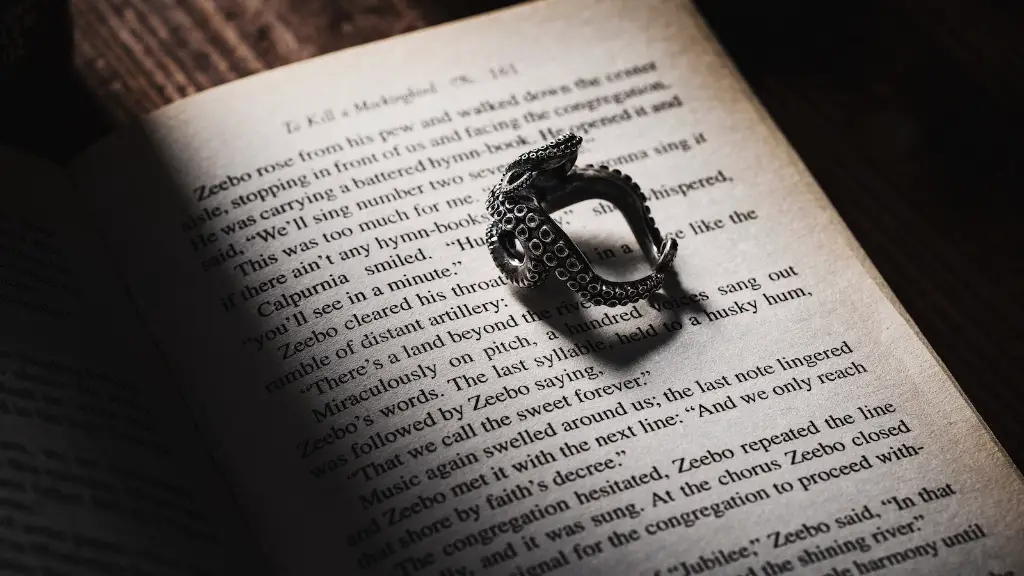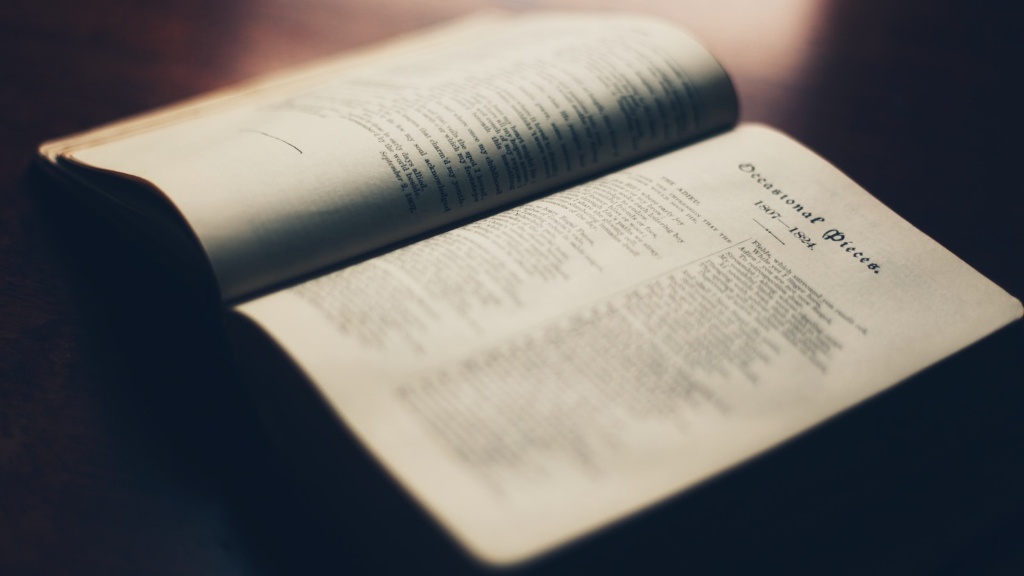Introduction
William Shakespeare was an English writer who achieved remarkable success in the fields of poetry and prose. As with most authors of his time, the distinction between poetry and prose was not clearly defined. This article will explore the differences between poetry and prose as used by Shakespeare in his works, as well as offering an analysis of their respective impacts on literature.
Poetry
Poetry is a literary form characterized by emotion, imagery and meter. Shakespeare’s poetry is often structured and written in iambic pentameter, with poetic devices such as rhymes, alliteration and metaphor used to develop his themes. One example of this is in Romeo and Juliet, wherein the characters employ a poignant and passionate exchange as tribute to their love, providing a heightened sense of drama.
The beauty of poetry lies in its ability to evoke and express emotion, in a manner that no other form of writing can match. This is timeless and enduring, as evidenced by its use throughout history and across all cultures. As Shakespeare wrote in Romeo and Juliet, “What’s in a name? That which we call a rose by any other name would smell as sweet”. In other words, the power of poetic devices helps gives meaning and resonance to every word, and thus breathes life into the text.
Prose
Prose, on the other hand, is a literary form which uses a more natural style of writing. Generally, it is composed of well-structured sentences and paragraphs, with a focus on structure and continuity. The dialogue of characters in works such as A Midsummer Night’s Dream and Twelfth Night is an example of this. Such dialogue serves to act as conversational linkage between scenes, providing necessary information to build characters, further the plot and to express the authors’ intentions.
The primary purpose of prose is to communicate ideas and information, rather than emotional resonance, so it can be said to be much more direct and efficient in getting its point across. In that respect, Shakespeare’s use of prose was very much ahead of its time, relying heavily on clever wordplay and wit to convey the various nuances of his work. His plays were written to be entertaining as well as thoughtful and to be enjoyed by a broad audience.
Meanings and Messages
Another key difference between poetry and prose lies in the meanings and messages they seek to convey. While poetry is often used to express one’s feelings, emotions or opinions, prose is generally more focused on conveying facts or knowledge. Similarly, whereas poetry is generally considered more creative and abstract in its approach to communication, prose is typically thought of as more rational and analytical.
The contrast between these two distinct forms of writing is especially apparent in Shakespeare’s works. Take Macbeth for instance, wherein the play’s protagonist is a tragic hero beset by ambition. His turmoil and emotions are effectively conveyed through the use of subtle poetic devices, making for a far more powerful and dramatic narrative. On the other hand, Hamlet relies more heavily upon prose, offering rational justifications and explanations for the characters and their actions.
Rhetoric
Furthermore, the distnction between rhetoric and poetry can be seen in Shakespeare’s writing. Rhetoric refers to the use of language to persuade or motivate, and is generally considered a distinctly different category to poetry. In Shakespeare’s works, this form of writing is often used by characters in positions of power or authority, such as kings and queens or military commanders, to express their point of view.
For example, in Henry V, delivered by the eponymous king as a rallying call to his troops on the eve of battle, is an excellent example of rhetorical devices being used to generate an atmosphere of pride and patriotism. Shakespeare’s use of metaphors, antithesis and hyperboles help to breathe life into the speech, making the persuasive effect all the more convincing.
Drama
Drama plays an important role in the composition of poetry and prose. Poetry often relies on metaphor and other figurative language to convey powerful emotions, allowing readers to easily engage with the text and understand its subtleties. Conversely, prose often employs a matter-of-fact tone in order to drive the plot, bringing about resolution to the oftentimes complicated and tangled storylines.
This can be seen in Shakespeare’s plays, wherein he typically combines both poetic and prose passages to create a dramatic and emotive effect. For example, in the Merchant of Venice, Shylock’s plea to be treated as an equal is expressed both in poetic form and in professional arguments. The combination of these two forms ultimately serves to attain a stronger emotional connection to the story, making us sympathize with the otherwise unsympathetic protagonist.
Style
The style of writing is also significantly different between poetry and prose. Poetry is often free-flowing and emotive, relying on sound, rhythm and imagery to evoke emotions such as love, sorrow, joy and other similar shades of sentiment. Conversely, prose often seeks to explain an idea or tell a story in a more structured, methodical manner.
The contrast between the two is most evident in Shakespeare’s plays. He often employs prose in order to relay plot points, establish characters, and to explain complex feelings or situations. On the other hand, he makes use of poetic passages to offer vivid descriptions of scenes, to express characters’ feelings, and to craft compelling dialogue.
Uses
The two forms of writing are often used in tandem to great effect. Poetry is ideal for expressing raw emotion and romanticism, while prose can be used to elaborate on this. Prose can also be used to create vivid scenes, build characters and to propel plot. It is typically logical in structure and sequencing, allowing for complex thoughts and ideas to be expressed in a more direct and concise manner.
This is evident in Shakespeare’s works such as Hamlet, wherein the mysterious death of the eponymous prince is explored in great detail through the use of both poetic and prose passages. Through it we are given a glimpse into the inner turmoil and motivations of the characters, offering an insight into the tragedy that ensues.
Context
It is also important to consider the historical context of the works being examined. Shakespeare’s works were written in the late 16th Century, in a time where the boundaries of both poetry and prose were generally loose and ill-defined. As such, his use and combination of both forms in his works was likely seen as revolutionary and daring, offering a new way of thinking and approaching storytelling.
It was also during this period that poetic forms such as the sonnet and the ballad emerged, offering new avenues for creative expression. Even though the differences between poetry and prose were not always clearly defined, Shakespeare’s works are an example of how both forms can be used to great effect in literature.
Technique
Understanding the techniques used by Shakespeare in both poetry and prose is essential to understanding their distinct forms. Poetry is often characterized by emotion, imagery and meter, while prose is typically more structured, uses fewer poetic devices and relies more heavily on logic and reason.
The most effective use of these two different approaches depends on the purpose of the writing, and the impact that the author wishes to achieve. By understanding and utilizing both effectively, authors can create works of literature that are both entertaining and thought provoking.
Imagery
Lastly, there is the use of imagery in poetry and prose. Poetry is often characterized by its vivid imagery and emotionally powerful language, often providing descriptions of scenes or characters that appeal directly to the reader’s senses. Conversely, prose often uses imagery in a more subtle way, often used to further the plot or build characters.
Shakespeare makes great use of both in his works. Every character and scene is brought to life through the imaginative use of vivid descriptions, grounded in the illusionary world he creates. His use of both poetic and prose passages helps to offer commentary on the human condition and our shared experiences, thereby allowing readers to better understand the nuances of life.
Conclusion
In conclusion, William Shakespeare’s works offer an excellent example of the difference between poetry and prose. His plays often use both forms to great effect, in a way that bridges the divide between theatrical and literary expression. While poetry is used to express raw emotion, prose serves to provide clarity and direction to the story. Through their combination, Shakespeare is able to create powerful and compelling works of literature that have stood the test of time.



